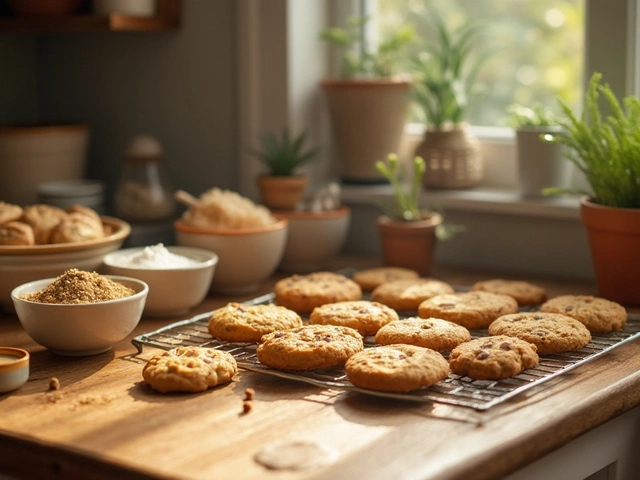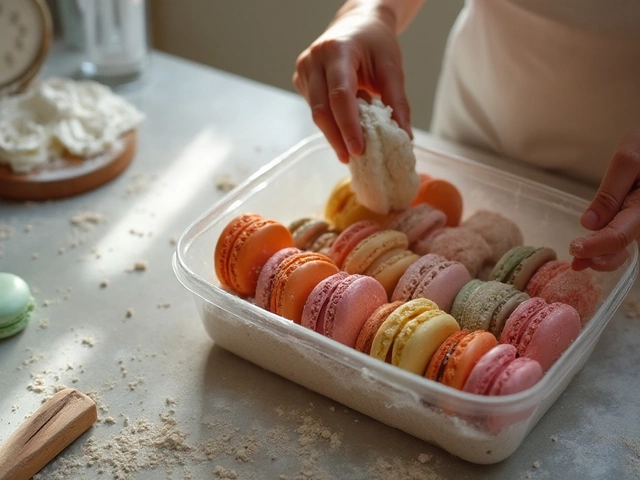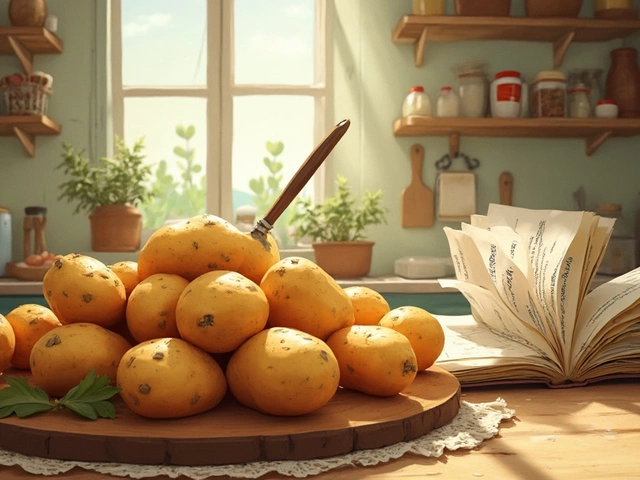
Cakes have an undeniable charm, effortlessly making their way into our celebrations, comfort moments, and sweet indulgences. Whether it is the grandeur of a wedding cake or the simplicity of a homely loaf, each bite tells a story, a history of taste crafted over generations.
From corners of the globe come iconic recipes, each holding a flavor that speaks the language of love and comfort. While the rich, dense chocolate cakes enchant chocoholics, delicate sponge varieties cater to those seeking lightness and subtlety. Let us embark on a flavorful journey, exploring what makes these cakes timeless treasures, and learn a few kitchen secrets to whip up perfect cakes every time.
- Introduction to Cake Indulgence
- Cultural Cake Favorites
- Why We Love Cakes
- The Art of Baking
- Tips for Perfect Cakes
- Conclusion: Celebrating Cake Love
Introduction to Cake Indulgence
Cakes have long held a cherished place in our hearts and kitchens, as they perfectly blend the art of baking with the joy of sharing. These delightful confections are not just baked goods; they are woven into the very fabric of our celebrations and traditions. From ancient times to modern days, cakes have been markers of joyous occasions, from grand gala evenings to intimate birthday parties, each event unique yet united by the sweet allure of cake. Around the world, this beloved dessert has evolved, adapting to the ingredients and flavors of different cultures, yet essentially celebrating the same spirit of indulgence and warmth.
The history of cake dates back to ancient Egypt, where the earliest forms were sweetened with honey. Fast forward to the 17th century, and the cake recipes began incorporating refined sugar, making them extra fluffy and delicious. Today, there is an endless variety of cakes, each with its own tale. Whether enjoying the multilayered masterpiece of a black forest gateau or savoring the richness of a slice of red velvet, each type of cake tells a story of culinary evolution combined with societal change. Interestingly, in an article by The New York Times, a renowned food historian observed that "cake is a timeless vessel that carries both tradition and adaptation in its sweet layers".
Cake recipes are also a testament to human creativity. From trial and error emerged iconic flavors like chocolate, carrot, and vanilla, each an innovation in its own right. The use of local fruits and spices gives birth to regional specialties – Italian tiramisu, Mexican Tres Leches, and the Japanese Matcha cake are just a few examples of how local flavors intertwine with the sweet richness of cake flour and sugar. As we explore these diverse cakes, we find a common thread in the joy they bring, making them not just food but a cultural phenomenon that's enjoyed by billions worldwide.
Modern bakers and home chefs continue to push the boundaries of flavor and design by experimenting with textures and combinations that delight all the senses. Whether it’s through the frosting that melts in your mouth or the unexpected crunch of a nutty surprise, each element contributes to this beloved dessert. It is this constant evolution, the adventurous spirit of bakers everywhere, and the universal love for a sweet treat that ensures cakes remain a centerpiece of culinary indulgence. As we delve deeper into this topic, let’s celebrate the versatility and creativity that world cakes inspire in kitchens everywhere.
Cultural Cake Favorites
When we traverse the world through our taste buds, we discover that cakes, like dialects, have evolved uniquely in every region, reflecting local ingredients and customs. In France, the irresistible charm of the classic "Gâteau Opéra" offers layers of almond sponge soaked in coffee syrup, layered with ganache and coffee buttercream, and covered in a sublime chocolate glaze. This luxurious treat exemplifies French culinary finesse, echoing their love for indulgence with every forkful.
Next, let’s venture towards Italy, where the "Tiramisu" reigns supreme. Originating from the word 'tiramisù', which means "cheer me up", this delicate medley of coffee-soaked ladyfingers with rich mascarpone cream has a history believed to date back to the 1960s in the region of Veneto. Each recipe often comes as a family secret, savory and sweet, just like Italian lineage stories passed down through time.
Traveling across the globe to Japan, we experience the feather-light "Matcha Cake." Leveraging the country’s beloved green tea powder, this cake is a remarkable fusion of tradition and innovation. The subtle bitterness of the matcha balances the sweetness, offering a taste profile that captivates both young and sophisticated palates. Many Japanese bakeries pride themselves on achieving the perfect balance of fluffiness and flavor in each bite.
In the heart of the Caribbean, the "Black Cake" stands as a festive symbol during Christmas. The cake's deep, rich flavors come from rum-soaked fruits that have been marinated for months, making it a potent and flavorful favorite. Traditionally, families bond over the preparation of this cake, valuing the time it takes to perfect this age-old delicacy.
Finally, we explore the streets of Istanbul, where "Baklava" tantalizes passersby with its aroma and sweetness. Though not a cake in the traditional sense, its layered structure qualifies in spirit. With origins connecting various empires, baklava’s appeal transcends its flaky pastry layers, generously filled with nuts and sweetened with honey or syrup.
"Baklava has been a bridge through civilizations, a testament to the rich tapestry of cultural exchanges over centuries," noted culinary historian James P. Covey.
Each of these desserts reveals a culture’s identity, offering a glimpse into their history and tradition. With every forkful, we taste the past and appreciate the craft of those who strive to preserve these treasures. Whether you choose to explore with your kitchen or seek them out at the source, these cake recipes promise an adventure for the senses.
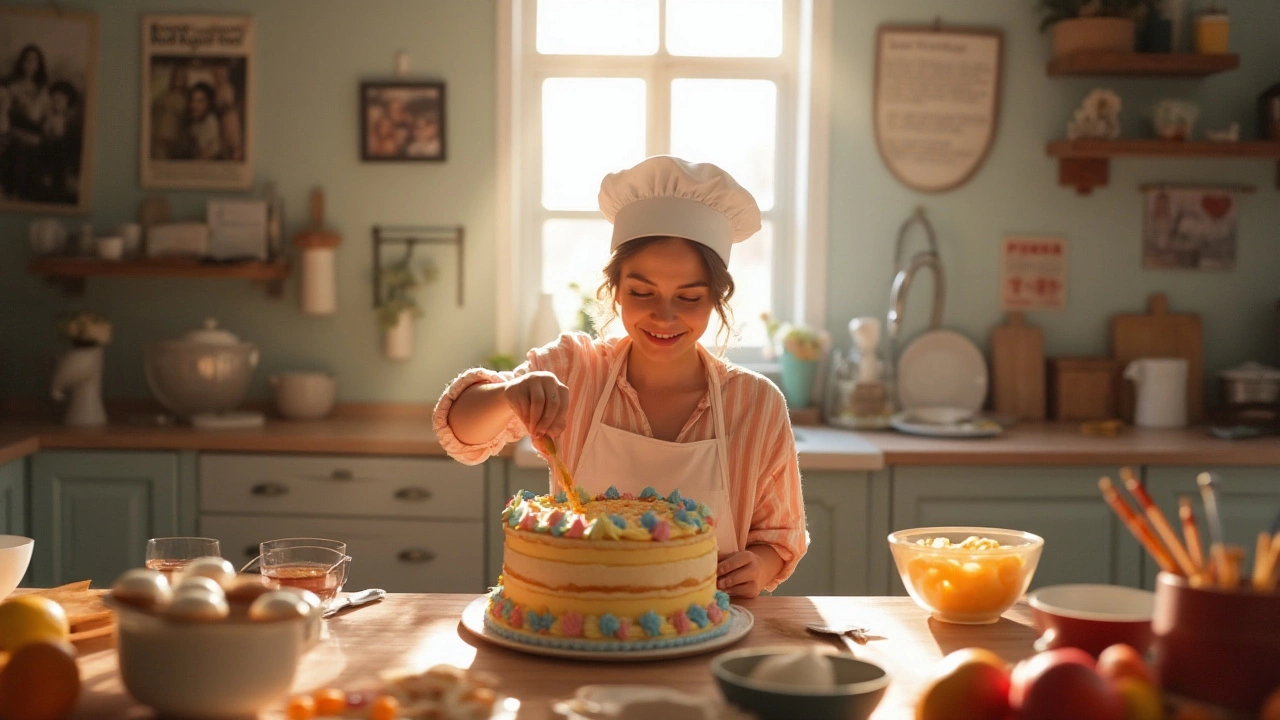
Why We Love Cakes
Cakes hold a special spot in our hearts, weaving between the fabric of everyday life and those rare celebrations that punctuate it. Their allure is not confined to a single moment; they are the sweet crescendo that amplifies joy, comfort, or even melancholy. This universal dessert speaks to the soul with its blend of texture and flavor harmony. The rich tapestry of cakes around the world is a testament to the creativity and tradition imbued in every slice. From the airy sponges cherished in East Asia to the rich and syrupy layers of baklava in the Middle East, each region offers its unique take, showcasing cakes as culinary art.
One can speculate the origins of our cake craze; perhaps it lies in their antiquity. The earliest cakes were likely crude forms made from grains mixed with honey. Over the centuries, as baking technology evolved, so did the cake's sophistication. Our fascination with these confections can also be attributed to their versatility. Whether lavishly iced or minimally frosted, they cater to diverse palates. The ritualistic nature of baking a cake holds a certain charm, an act of love akin to alchemy, transforming raw ingredients into something transcendent.
Celebratory customs associated with cakes further anchor their place in culture. Birthdays, weddings, and festive gatherings often have a cake center stage, symbolizing prosperity and unity. Psychologically, cakes also tickle our emotions as they embody moments of indulgence. The mere presence of cake on a table can provoke nostalgic reflections of childhood, blending sensory experiences with cherished memories. The act of sharing a cake plays into our social instincts, making it a conduit for connection and communication.
"The most essential part of a cake is not necessarily what's inside. It's what it makes you feel, the memories it creates," once wrote renowned chef and food philosopher, Andrée Putman.
Explore the list of beloved dessert cakes worldwide, and you'll find this feeling of nostalgia and creativity deeply embedded. From the buttery layers of a French mille-feuille to the spicy depth of a German Black Forest gâteau, cakes are evolving stories of flavor. There is also an intrinsic satisfaction in perfecting a cake, from creaming the butter to watching the batter rise beautifully in the oven, each step an affirmation of culinary magic.
The Art of Baking
The real magic in the world of cake recipes lies in the artful process of baking. It's a dance of science and creativity that captivates anyone who steps into the kitchen. A delicate balance of precise measurements and the right technique transforms simple ingredients into something quite extraordinary. Did you know that a cake's texture can be utterly changed by merely adjusting the oven temperature by a few degrees? Baking is not only about following a recipe but understanding the way each ingredient behaves. Flour, sugar, and eggs come together closely guarded by techniques honed over time.
In exploring the art of baking, one must understand the crucial role of leavening agents like baking powder, baking soda, and yeast. These create the light, airy structure we enjoy in cakes. Two teaspoons of baking powder are often used for each cup of flour in recipes. Each agent brings a distinct chemical reaction to the mix, yet together, they create the fluffy texture we adore. Temperature, too, plays its part, affecting every aspect from batter to rise, and crumb to crust, ensuring each dessert stands as a testament to care and precision.
"Baking may be regarded as a science, but culinary art forms the soul of any baked good," says renowned chef Mary Berry.
The choice of technique, whether folding for air or beating for structure, speaks volumes about the final product. Folding gently into the batter coats delicate bubbles that baking powder lets loose, maintaining buoyancy in each layer. Beating brings in air that bolsters structure, while overworking can deflate a dream of cloud-like peaks. Knowing when to be gentle and when to exert force is part of the artistic skill that defines successful baking.
Bakers master the art of substitution — the epitome of culinary creativity. In the absence of eggs, some turn to bananas, applesauce, or chia seeds, balancing moisture and structure with surprising efficiency. Lactose intolerant users may reach for almond or oat milk, knowing how creamy consistency adapts owing much to its composition. Each substitution requires knowledge and experimentation, often blending tradition with modern dietary needs to keep cakes versatile yet scrumptious.
Decorating is the final stroke of genius in a baker's artwork. It involves icing, fondant, fruits, and embellishments that complement the underlying flavors. There’s nothing as evocative as a cake that’s visually stunning, enticing with both look and aroma. A sprinkle of powdered sugar dusts the top as the finishing touch that echoes simplicity and elegance. Indeed, every detail imbues the beloved dessert with character and charm.
In conclusion, though anyone can follow a recipe, it is the understanding, skill, and touch of personal creativity that make good cakes great. The choices along the way—ingredients, methods, design—meld into something more than the sum of its parts, delightful in every bite of its intended beloved dessert. The art of baking is a journey where passion fuses with warmth, making every cake a masterpiece.
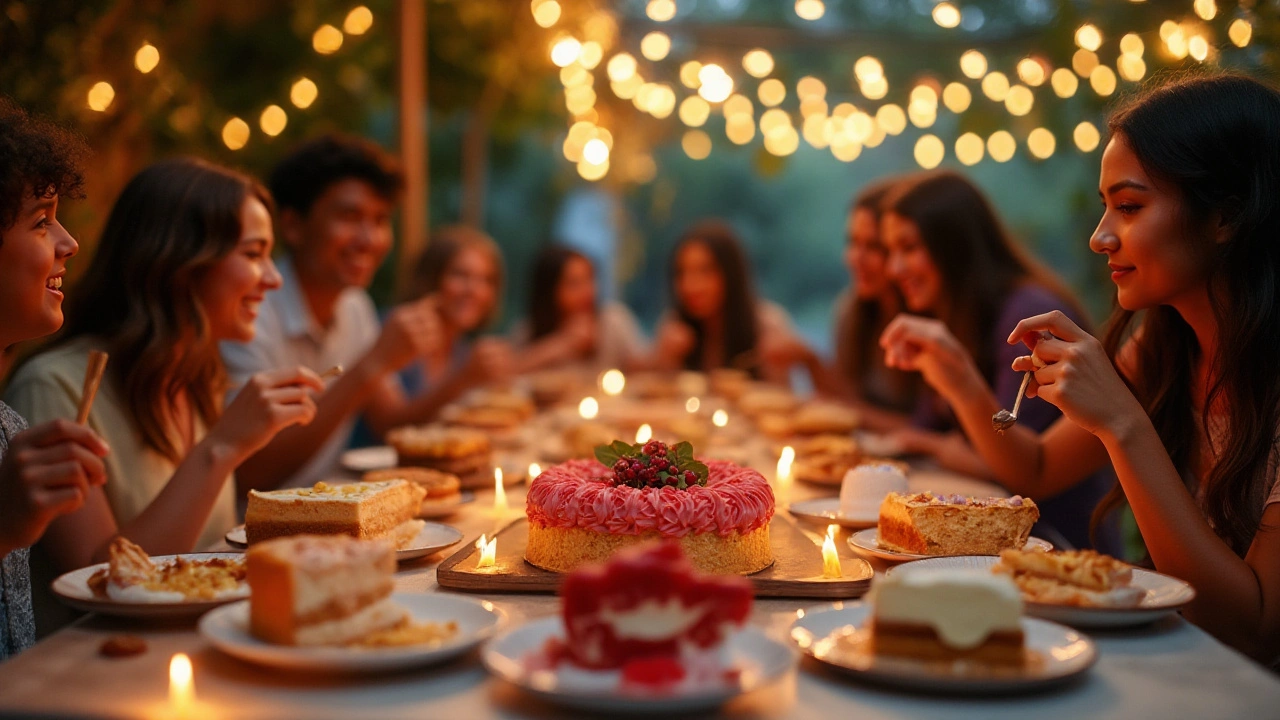
Tips for Perfect Cakes
There's a magical allure to cake recipes that stem from their perfect symmetry of flavor, texture, and presentation. Mastering the art of cake baking involves understanding several crucial elements that work harmoniously together. Firstly, focus on the ingredients. Use the freshest and finest quality ingredients you can find. Fresh eggs, real butter, and high-quality flour and chocolate can elevate the taste and texture of your cake remarkably. Remember, baking is a science, and each ingredient plays a specific role, from the structure to the flavor profile. Proper measurements are crucial. Invest in a reliable set of measuring cups and scales to ensure accuracy for each of your creations.
Another critical aspect is the mixing technique. Never underestimate the power of a well-creamed butter and sugar base. This process incorporates air into the batter, which is essential for a fluffy, light texture. Keep a watchful eye on the creaming, and don't rush this step. It usually takes about 3 to 5 minutes to achieve the right consistency. Once you add the dry ingredients, fold them gently into the mixture to avoid deflating the batter. Over-mixing can lead to a dense, chewy cake.
Understanding Oven Temperatures
The role of temperature cannot be overstated when aiming for cake perfection. Preheat your oven well in advance and invest in an oven thermometer to ensure it remains at the correct temperature throughout the baking process. Ovens can be notoriously inconsistent, so don’t rely on the in-built dials alone. Adjusting the oven rack to the middle position is another smart move. This ensures even heat distribution around the cake, preventing burnt tops or undercooked centers.
"Baking can be such a relaxing time. Enjoy your time in the kitchen and don’t be afraid to delay adding ingredients for what they believe may be the 'perfect' recipe." — Mary Berry
Timing is Everything
Keep track of your baking time with precision. A cake left in the oven for even a few extra minutes can come out dry and crumbly. Conversely, taking it out too early can result in a soggy, undercooked dessert. Use the tried and tested method of inserting a toothpick into the center of the cake to check for doneness; it should come out clean or with just a few crumbs clinging to it. Be patient and let the cake cool properly on a wire rack before you attempt any removal or icing. This step ensures the cake sets well and doesn’t crumble or break apart when you finally serve it.
Decorating and Icing Magic
Once your cake has cooled, the decoration can turn your bake into a masterpiece. The icing should complement, not overpower, the cake itself. Start with a crumb coat—a thin layer of icing applied to trap any stray crumbs—and refrigerate it for at least 30 minutes. This method creates a smooth surface, allowing your final icing layer to adhere flawlessly. When applying the final coat, use a pallet knife for smoothness and precision. To add some flair without overwhelming the taste, consider simple decorations like fresh fruits, a light dusting of powdered sugar, or elegant chocolate shavings. Remember, the goal is balance; the decoration is the visual story, while the cake remains the star of the show.
Conclusion: Celebrating Cake Love
As our journey through the world of cake recipes comes to an end, it becomes evident that cakes are much more than just an arrangement of sugar, flour, and butter. They are an entity, a creature born of culture and tradition, and their appeal carries across boundaries with a unique sense of belonging and joy. Each region we visited reveals distinct cake varieties, spun from the threads of history and painted by the colors of local taste. Who could resist the charm of an Italian Tiramisu, layered with mascarpone and espresso, or the elegance of a Japanese matcha sponge subtly infused with green tea? These cakes are more than just desserts; they are stories told through taste, significant pages in a cultural book.
What makes cakes truly timeless is their intrinsic capacity to adapt and endure. Over centuries, they have evolved, embracing new ingredients and surviving through generations of bakers keen to leave their mark. Chocolate may be the flagship of lush indulgence, deeply entrenched in our hearts, but every cake shape or flavor etches a unique memory into our gastronomic adventures. As Julia Child once said,
"A party without cake is just a meeting."This notion underscores the symphony of emotions that cakes orchestrate wherever they make an appearance, from humble family gatherings to extravagant celebrations.
Even if you’re stirring batter for the first time or are an accomplished pastry artist, the essence lies in the joyous act of creation, the dedication to pouring your heart into something that might celebrate a birthday, console on a tough day, or welcome someone home. To bake is to participate in a cultural continuum of shared history and joy, making each slice a connection to someone, somewhere, in sometime.
It’s no accident that nearly every part of the world treasures its own beloved cake recipes, even if subtly different or traditionally rooted in its origins. From the renowned Parisian éclairs to New York’s beloved cheesecake—a testament to the earthiness and richness cheese brings when paired with light, crumbly bases. It’s clear that the world's beloved dessert wears many hats, delighting us in a hundred ways.
Embracing these desserts and transforming them into personal ventures in our kitchens promises not only flavors to fantasies but a shared bond to the sincerest of loves. Cakes are kindness in culinary form, encompassing dreams, traditions, and a sprinkle of hopeful imagination. As long as there are occasions to celebrate, there will be cakes ready to grace the tables, ensuring life’s sweetest moments remain scrumptious and soft, just a slice away. So go ahead, bake with heart, share with love—because somewhere in the lush tapestry of cakes lies a story waiting to become a cherished memory in your book.



